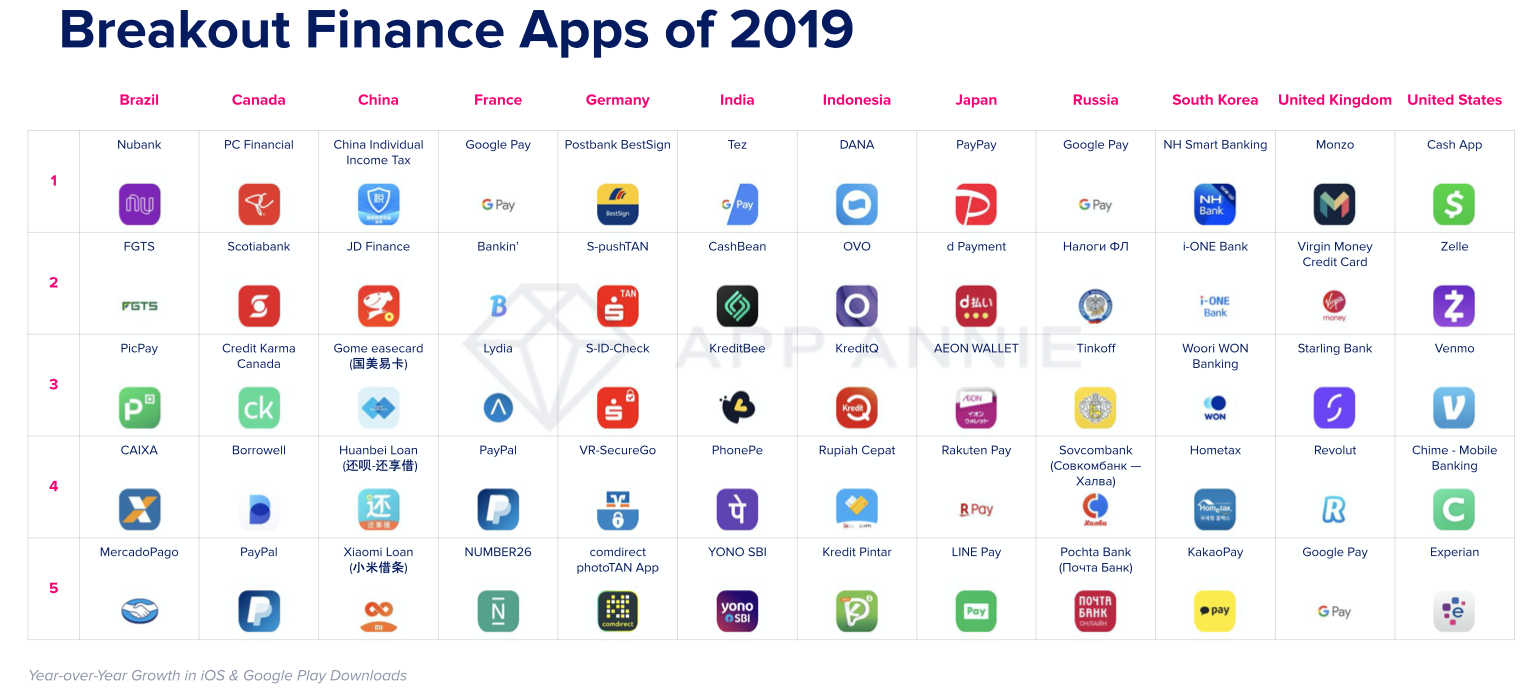While most traditional banks provide services through mobile banking, it is the challenger banks that are growing in the space.
The number of active users for fintech apps grew by 20% in 2019, compared to a growth of 15% in traditional bank and financial services, according to data compiled by App Annie.
Using apps to keep track of finances is also growing, with finance apps accessed over 1 trillion times, the data company found in its State of Mobile 2020 report.
The data should not come as too much of a surprise, with both Google and Apple offering financial services. Google is working to offer checking accounts as soon as this year, while Apple offers a credit card.
Fintech Dominates Breakout Finance Apps
Fintech companies also dominated the breakout finance apps of 2019, with Postbank BestSign growing over 9,300% in downloads year-over-year in Germany. Tez in India recorded 36 million new downloads, a 50% growth from last year. In the U.S., Cash App and Zelle were among the top breakout apps, while fintech company Monzo dominated the UK’s finance apps of 2019.

“While banking apps tend to have higher existing user bases, this illustrates fintech’s disruption — enabled and accelerated by mobile — of traditional banking services,” the report stated.
Wallet apps by fintech companies are among the most popular, with users engaging 52 times per year more than wallet apps by traditional banks. This figure represents “millions of potential transactions each year flowing through fintech companies instead of banks,” the report said.
User engagement was driven in China, with the country accounting for nearly half of the total number of sessions. Cryptocurrency wallet apps such as upBit, Binance and Bithumb helped drive that growth, the report stated.
Traditional Banks Face Disruption Challenge
The report highlights the demand for financial apps, as mobile users turn to their phones to manage their daily lives. Still, it also highlights the challenge that traditional banks face as companies like WeChat and AliPay in China and LINE in Japan create all-in-one apps, a move that Amazon, Google and Apple are also trying to follow.
“The key to mobile is ease, accessibility and simplicity. Features like face or finger recognition streamline the user journey. This underscores why companies can’t port over an existing experience to mobile. Mobile requires deliberate planning to meet consumers’ expectations,” the App Annie report said.
Consumer App Spending Also on the Rise
Spending on applications grew in 2019, App Annie found, with $120 billion spent on apps, subscriptions and other in-app purchases. In total a record 204 billion apps were downloaded in 2019, up 6% from the prior year and rising 45% since 2016.
Games account for 72% of consumer spending on apps, but there is a shift in subscriptions, the report noted. Subscriptions in non-gaming apps account for 28% of spending, compared to just 18% in 2016.
“Publishers are taking advantage of the expanded monetization opportunities from in-app subscriptions. On Google Play, 79% of the top 250 apps by spend in the US monetized through in-app subscriptions in 2019. On iOS, this was higher at 94%,” the report said.











